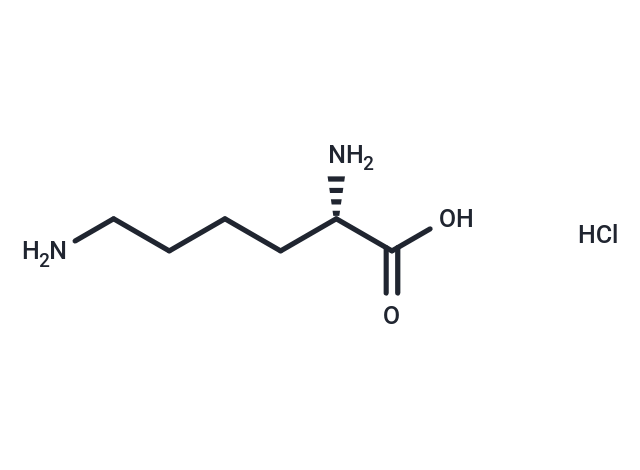Shopping Cart
- Remove All
 Your shopping cart is currently empty
Your shopping cart is currently empty

L-Lysine hydrochloride, an essential amino acid for humans, offers numerous benefits including the treatment of herpes, reduction of diabetes-related illnesses, enhanced calcium absorption, and improved gut health.

| Pack Size | Price | Availability | Quantity |
|---|---|---|---|
| 2 g | $34 | In Stock | |
| 5 g | $53 | In Stock | |
| 10 g | $77 | In Stock | |
| 25 g | $127 | In Stock |
| Description | L-Lysine hydrochloride, an essential amino acid for humans, offers numerous benefits including the treatment of herpes, reduction of diabetes-related illnesses, enhanced calcium absorption, and improved gut health. |
| Alias | Lysine hydrochloride |
| Molecular Weight | 182.65 |
| Formula | C6H15ClN2O2 |
| Cas No. | 657-27-2 |
| Smiles | NCCCC[C@@H](C(O)=O)N.Cl |
| Relative Density. | 1.28 g/cm3 at 20℃ |
| Storage | Powder: -20°C for 3 years | In solvent: -80°C for 1 year | Shipping with blue ice. | ||||||||||||||||||||
| Solubility Information | H2O: 10 mM, Sonication is recommended. DMSO: Insoluble | ||||||||||||||||||||
Solution Preparation Table | |||||||||||||||||||||
H2O
| |||||||||||||||||||||

Copyright © 2015-2025 TargetMol Chemicals Inc. All Rights Reserved.